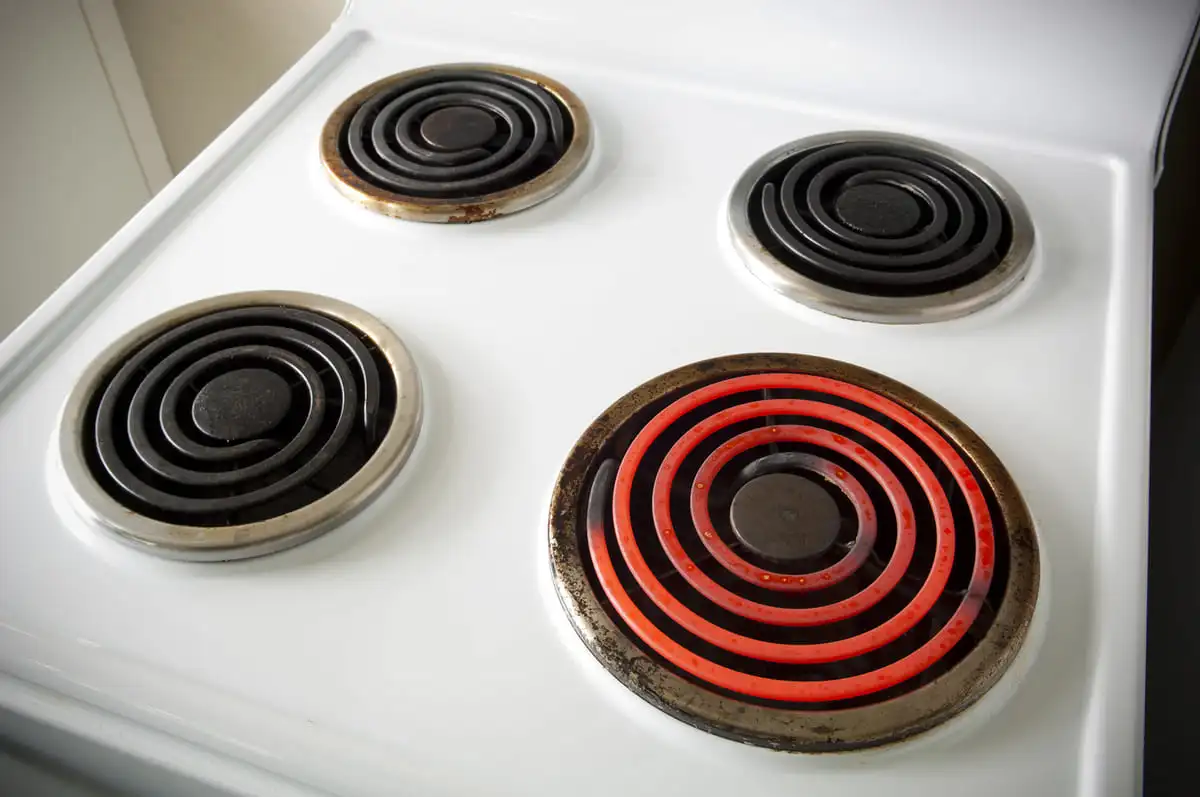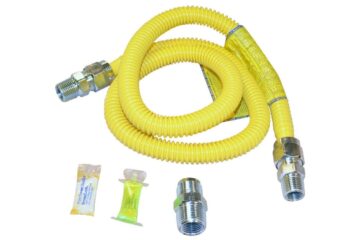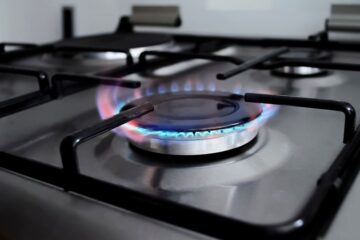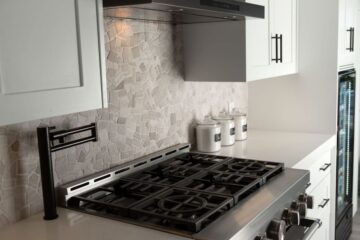Cooking on a stove is one of the most basic yet essential tasks in any kitchen. Whether you are an experienced chef or a beginner, it is important to understand the different parts of a stove, including the stove’s eyes. Stove eyes, also known as burners, are the round metal plates on top of a stove that generate heat for cooking.
In this Stove Eyes 101 guide, we will explore the basics of stove eyes and how they work. We will cover the different types of stove eyes, their sizes, and their functions. We will also discuss the importance of maintaining your stove eyes and how to clean them properly.
Understanding stove eyes is crucial for anyone who wants to cook delicious meals in their kitchen. By the end of this guide, you will better understand how stove eyes work and are equipped with the knowledge you need to use them efficiently and safely. So, let’s dive in and learn everything there is to know about stove eyes!
What Is A Stove Eye?
A stove eye, also known as a burner, is a stove component that generates heat for cooking. It is typically circular and made of metal. It has a small opening in the center where a flame or an electric heating element can be ignited. Stove eyes come in different sizes and can be adjusted to different heat levels, allowing for various cooking temperatures.
Gas stoves typically have stove eyes that heat the cooking surface with a flame. In contrast, electric stoves have stove eyes that use an electric heating element. Some modern stoves may have induction stove eyes that heat the cooking surface with electromagnetic fields. In all cases, the stove eyes are an essential part of the stove that allows food preparation.
Importance Of Understanding Stove Eyes
Understanding stove eyes is essential for several reasons:
1. Safe and efficient cooking
By understanding the stove eyes on your stove, you can cook safely and efficiently. You’ll know how to adjust the heat settings to get the right temperature for cooking different types of food, and you’ll be able to avoid accidental burns or fires caused by misuse of the stove.
2. Cooking flexibility
Different types of stove eyes can be used for different cooking purposes. For example, a giant stove eye can boil water or cook large dishes, while a smaller one can simmer or melt ingredients. Understanding your stove eyes’ different sizes and heat levels can help you cook a broader range of dishes more effectively.
3. Maintenance and repair
If you understand how stove eyes work, you’ll be better equipped to troubleshoot any problems. For example, suppose a stove eye isn’t heating correctly. In that case, you can identify the cause and fix the problem yourself rather than call a repair person.
4. Energy efficiency
Understanding stove eyes can also help you cook more efficiently, saving energy and money. For example, you can use the right size stove eye for the size of your pot or pan and avoid heating up the kitchen by using a smaller stove eye for lower-heat cooking.
Types Of Stove Eyes
Electric Stove Eyes:
Electric stove eyes are the heating elements on an electric stove that heat the cooking surface. There are typically two types of electric stove eyes:
- Coil Stove Eyes: These are the traditional type of electric stove eyes used for decades. They consist of a metal coil that heats up when electricity is passed through it. Coil stove eyes come in different sizes to accommodate different pots and pans.
- Smooth Top Stove Eyes: Smooth top stove eyes have a flat, glass-ceramic surface that heats up when electricity is applied. These stove eyes are easier to clean and more modern-looking than coil stove eyes. Smooth top stove eyes can be radiant. Heat is transferred through the glass surface, or halogen, which uses a halogen lamp to generate heat.
Gas Stove Eyes:
Gas stove eyes use natural gas or propane to heat the cooking surface. There are typically two types of gas stove eyes:
- Open Burner Stove Eyes: These stove eyes have a visible flame that provides heat to the cooking surface. Open burner stove eyes are typically more powerful than sealed burner stove eyes, making them better for high-heat cooking.
- Sealed Burner Stove Eyes: Sealed burner stove eyes are covered with a metal cap that helps distribute heat evenly. These stove eyes are typically easier to clean than open burner stove eyes. They are better suited for low-heat cooking, simmering, or melting ingredients.
Parts Of A Stove Eye
The main parts of a stove eye depend on the type of stove and the specific design of the stove eye, but some common parts are:
Burner Grate:
The burner grate is a metal frame that sits on top of the stove and supports the pots and pans during cooking. Burner grates are designed to be sturdy and heat-resistant and are often made of cast iron or stainless steel.
Burner Cap:
The burner cap is part of the stove eye that covers the burner head and helps to distribute heat evenly across the cooking surface. Burner caps are typically made of metal or ceramic and can be removed for cleaning.
Burner Head:
The burner head is part of the stove’s eye generating heat. For gas stoves, the burner head consists of a series of small holes that allow the gas to escape and ignite when the stove is turned on. For electric stoves, the burner head is a heating element that heats up when electricity is passed through it. Burner heads can come in different sizes and shapes depending on the stove model and design.
Other parts that may be included in a stove eye assembly are the igniter (for gas stoves), the control knob (for adjusting the heat), and the wiring that connects the stove eye to the stove’s electrical or gas supply.
Common Problems With Stove Eyes
Some common problems that can occur with stove eyes include:
1. Clogging
Gas stove eyes can become clogged with food debris or grease over time, affecting the gas flow and causing the stove eye to produce a weak flame or not ignite. Cleaning the burner head and cap regularly can help prevent clogging.
2. Ignition Issues
Gas stove eyes rely on an igniter to light the gas and create a flame. If the igniter is not working correctly, the stove eye may not ignite or produce a weak flame. A faulty igniter, a dirty or damp spark electrode, or a problem with the wiring can cause this. In some cases, the igniter may need to be replaced.
3. Uneven Heat Distribution
Stove eyes can sometimes produce uneven heat, with some areas of the cooking surface being hotter than others. Various factors, including a clogged burner head, a damaged burner cap, or a problem with the control knob or thermostat, can cause this. Cleaning the stove-eye components and properly installing them can help address this issue.
Maintenance And Cleaning Of Stove Eyes
Regular Cleaning Tips:
Regular cleaning of stove eyes can help prevent clogging and ensure they operate efficiently. Here are some tips for regular cleaning:
- Wipe down the stove eyes with a damp cloth to remove any food debris or spills after each use.
- Remove the burner grates and burner caps and wash them in warm, soapy water. Use a soft-bristled brush to scrub away any stubborn stains or debris.
- Clean the burner heads with a soft-bristled brush or a toothbrush to remove clogs or debris.
- Dry all the stove eye components thoroughly before reassembling them.
Deep Cleaning Tips:
Deep cleaning of stove eyes is necessary periodically to remove any stubborn stains or clogs that regular cleaning may not have addressed. Here are some tips for deep cleaning:
- Remove the burner grates and burner caps and soak them in warm, soapy water for several hours or overnight.
- Use a soft-bristled brush or a toothbrush to remove stubborn stains or debris from the burner heads.
- If the burner heads are severely clogged, they can be removed and soaked in warm water and vinegar for several hours.
- Dry all the stove eye components thoroughly before reassembling them.
Maintenance Tips:
In addition to regular cleaning, proper maintenance of stove eyes can help prevent issues and ensure they last longer. Here are some maintenance tips:
- Check the burner heads and caps periodically for any signs of damage, such as cracks or chips. Replace any damaged components promptly.
- Check the control knobs and ignition system regularly to ensure they function correctly. Replace any faulty components as needed.
- If you have a gas stove, have it inspected and serviced by a qualified professional at least once a year to ensure it operates safely and efficiently.
- Follow the manufacturer’s instructions to care for and maintain your stove eye components.
Stove Eye Vs Burner
A stove eye and a burner are both parts of a stove used for cooking, but they have slightly different meanings.
A stove eye typically refers to the part of the stove that contains the burner head, burner cap, and burner grate and is where pots and pans are placed during cooking. Stove eyes can be found on gas and electric stoves and are designed to distribute heat evenly across the cooking surface.
On the other hand, a burner refers specifically to the part of the stove that generates heat. Burners can be found on gas stoves and consist of small holes in the burner head that allow gas to escape and ignite, creating a flame. Electric stoves use heating elements as burners that heat up when electricity is passed through them.
In short, a stove eye is an entire assembly on a stove where you place your pots and pans for cooking, while a burner is the specific part of the stove that generates heat for cooking.
- What Is A Kitchen Range? Types, Sizes & Capacities
- Do Gas Ranges Have Built In Regulators? Get The Facts!
Why Do People Call A Stove Burner An Eye?
The term “stove eye” is often used interchangeably with “burner,” particularly in some areas of the United States. The origin of the term is partially transparent. Still, it may have arisen from how the burner looks when it operates, with the flame appearing like an eye.
Another possible explanation is that the term “eye” refers to the circular shape of the burner head. Some people also believe that the term may have originated from Southern dialects, where “eye” is a slang term for “I.”
What Happens If You Leave Stove Eye On?
Leaving a stove eye on for an extended period can be dangerous and cause various issues. Here are some of the potential consequences of leaving a stove eye on:
- Fire Hazard: Leaving a stove eye on can cause a fire if it is left unattended or if something flammable is too close to the stove. This is particularly true with gas stoves, as the gas can escape and ignite, causing a fire.
- Gas Leaks: If you have a gas stove and leave a stove eye on it, it can result in a gas leak. The gas will continue to flow even if the stove eye is not in use, which can lead to gas buildup in your home. This can be extremely dangerous and cause an explosion if not addressed promptly.
- Increased Energy Consumption: Leaving a stove eye on can also increase energy consumption, leading to higher utility bills.
- Damage to Stove Eye Components: Leaving a stove eye on for an extended period can also damage the burner head and other stove eye components. This can cause the stove’s eye to malfunction or become clogged, affecting its performance and lifespan.
What Are The Parts Of A Stove Called?
The different parts of a stove may vary depending on the type and model, but here are some of the common parts and their names:
- Cooktop or Stovetop: The flat cooking surface on which pots and pans are placed.
- Burners or Stove Eyes: The round, open flame or heating element on which pots and pans are placed.
- Burner Grates: The metal grates or supports that cover the burners and hold the pots and pans.
- Control Knobs: The dials or switches that control the heat output of the burners.
- Oven: The enclosed compartment below the cooktop where food is baked or roasted.
- Broiler: A separate heating element at the oven’s top is used for broiling food.
- Oven Racks: The metal shelves inside the oven that hold the food while it is being cooked.
- Drip Pans or Bowls: The removable pans or bowls are located beneath the burners to catch drips and spills.
- Backsplash: The vertical surface behind the cooktop, usually made of tile or metal, protects the wall from heat and splatters.
- Ventilation System: The fan and exhaust system are above the cooktop to remove smoke, steam, and odors during cooking.
Stove Eye Replacement: How To Do It Properly?
If you need to replace a stove eye, here are the general steps to follow:
1. Turn off the power or gas supply to the stove.
For electric stoves, unplug the stove or turn off the circuit breaker that controls the stove’s power. For gas stoves, turn off the gas valve located behind the stove.
2. Remove the old stove eye.
For gas stoves, lift the burner grate and carefully lift the burner cap to access the burner head. Remove the burner grate and lift the heating element from its socket for electric stoves.
3. Disconnect the wiring or gas supply line from the old stove eye.
Unplug the wiring harness from the stove eye for electric stoves or use a screwdriver to remove the wire terminals. Carelessly unscrew the gas supply line from the burner head for gas stoves.
4. Install the new stove eye.
For gas stoves, carefully screw the new burner head onto the gas supply line and reattach the burner cap and grate. For electric stoves, align the new heating element with its socket and push it down until it snaps into place. Make sure the new stove eye is securely in place.
5. Reconnect the wiring or gas supply line.
For electric stoves, plug in the wiring harness or attach the wire terminals to the new stove eye. For gas stoves, carefully screw the gas supply line onto the new burner head.
6. Turn on the power or gas supply and test the new stove eye.
For electric stoves, plug the stove back in or turn the circuit breaker back on. For gas stoves, turn the gas valve back on. Test the new stove’s eye by turning it on and ensuring it heats properly.
Bottom Line
All in all, stove eyes are essential components of any stove or cooktop. They provide a source of heat essential for cooking and preparing meals. Understanding the different types of stove eyes and their functions can help you to cook efficiently and safely.
Whether you prefer gas or electric cooking, stove eyes are available to meet your needs. So the next time you’re in the kitchen, look closer at your stove eyes and appreciate their importance in making your culinary creations possible. With proper use and maintenance, your stove eyes can serve you well for many years.



